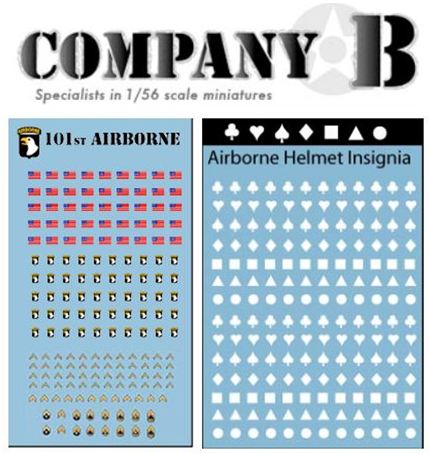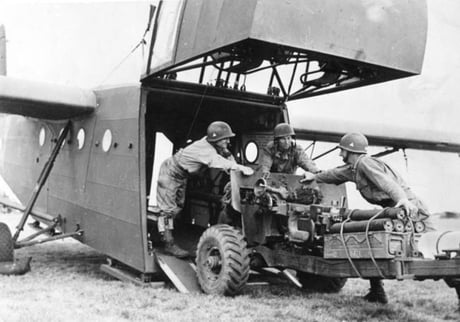
After a lot of modelling and gaming World War II over the years at the 15mm scale and some toes dipped into 6mm last year, I decided to move up to 28mm at the beginning of 2015. At this larger scale, there’s a lot less needed in terms of getting numbers of models on the table and there’s an opportunity for much more detail and personality in the figures, too. At about $2 USD per metal figure on average across a number of manufacturers, a more than healthy sized force for squad level engagements can be had with 30-40 or so figures on a side for under $100 USD.

To get started, I happened a timely sale deal for Artizan Designs miniatures ordered from Brigade Games. I’m very much a late war post-D-Day player, so I purchased a variety of US Airborne riflemen, officers, characters and a M1919 30 cal. machine gun team. I really like the detail in sculpts on the Artizan figures, so the prospect of getting these guys painted up was pretty exciting.

Artizan Designs provides a lot of painting reference information on their site, and the US Airborne painting guide gave me a good jumping off point. I have plenty of experience painting the US 101st Airborne Division in 15mm, and the larger 28mm scale gave me the opportunity to work through a lot more detail with my miniatures. My existing paint inventory as well as a few extra colors from Citadel gave me all I needed to whip up a solid painting scheme.

US 101st Airborne decals from Company B
To finish off my figures, I really wanted to add that last bit of realism at this scale with the appropriate patches and uniform markings. Since my painting skills don’t extend to the level of detail needed in painting patches and insignia, I was pleased to come across decals at this scale from Company B.
After some minimal flash clean-up, the individual figures got glued to metal washer bases. The prone LMG team went on a 60mm plastic base from Proxie Models and the two-man team on the move was glued to a larger metal washer. Here’s the painting guide in detail for my US Airborne:
Painting 28mm US Airborne
- Clean flash from metal models with a sharp knife and glue to metal washer or plastic bases.
- Apply filler putty to bases. When dry, scrape off excess with a sharp knife.
- Base coat models and bases with flat black spray primer.
- Paint uniforms and bandages on helmets with Tallarn Sand.
- Paint helmets and knee and elbow patches with Waaagh! Flesh.
- Paint faces and hands with Tallarn Flesh.
- Paint webbing and packs with Baneblade Brown.
- Paint bases, boots, gun stocks and helmet straps with Dark Brown.
- Apply Agrax Earthshade wash to uniforms, helmet netting, webbing and packs.
- Mix 50/50 Baneblade Brown and Off White and lightly dry brush packs, webbing and socks.
- Lightly dry brush bases, gun stocks, helmet netting, holsters and elbow and shoulder patches with Baneblade Brown.
- Paint metal gun parts with black and finish with a light dry brush of metallic silver.
- Paint eyes with small dots of Off White and Dark Brown. Clean up around eyes with Tallarn Flesh.
- Mix 50/50 Tallarn Flesh and Off White and brush highlights on cheekbones, chins, forehead, nose and hands.
- Apply decals to shoulders and helmets, followed by a coat of Solvaset decal fixative from Walthers.
- Cover bases in white glue and cover in 50/50 mix of fine light green and dark green grass flock.
- Glue small pieces of clump foliage to base.
- Spray coat completed models with matte finish.

Filler putty applied to US Airborne .30 cal machine gun teams

Helmet and uniform base coats on US Airborne riflemen

Flesh base coat on hands and faces on riflemen and command figures

Uniform, helmet and flesh base coats on the .30 cal machine gun teams

Washes and dry brush layers added to the .30 cal machine gun models and bases
And now, a whole series of my completed US airborne troops from Artizan Designs…













I still want to fill out my US forces with some additional troops and support weapons, so there will be more to come from Artizan and some other manufacturers. Getting some Germans ready for the table is another pending project on the workbench. Transport and armored vehicles are also very much on my mind. I’m also still debating rule sets, and I’ve been reading up on a variety including the popular Bolt Action from Warlord Games and Nuts! from Two Hour Wargames. With my first 28mm troops ready for action, WWII at a new scale is keeping the period exciting for what I’m certain will be another new year of painting and playing.


























































